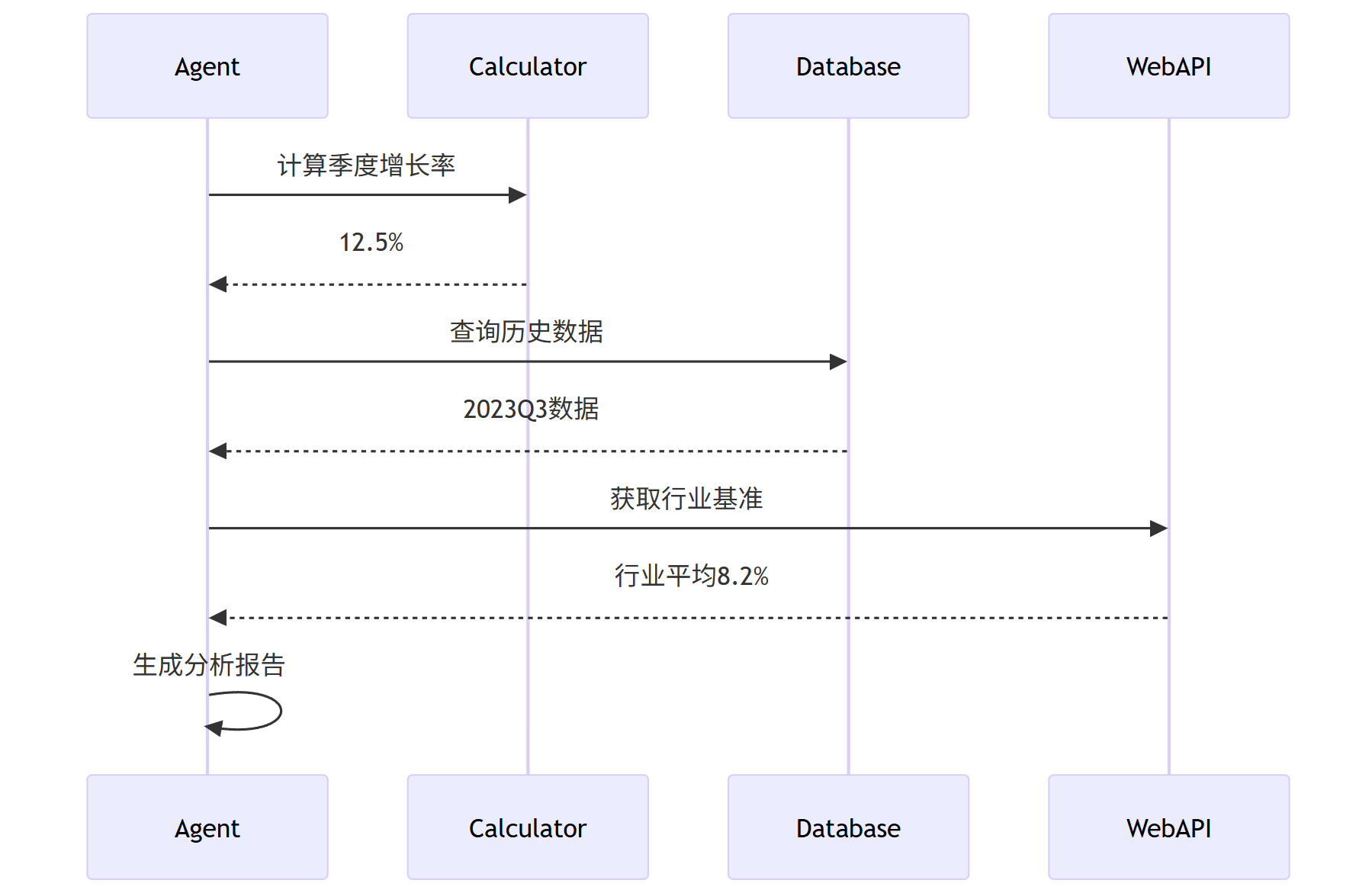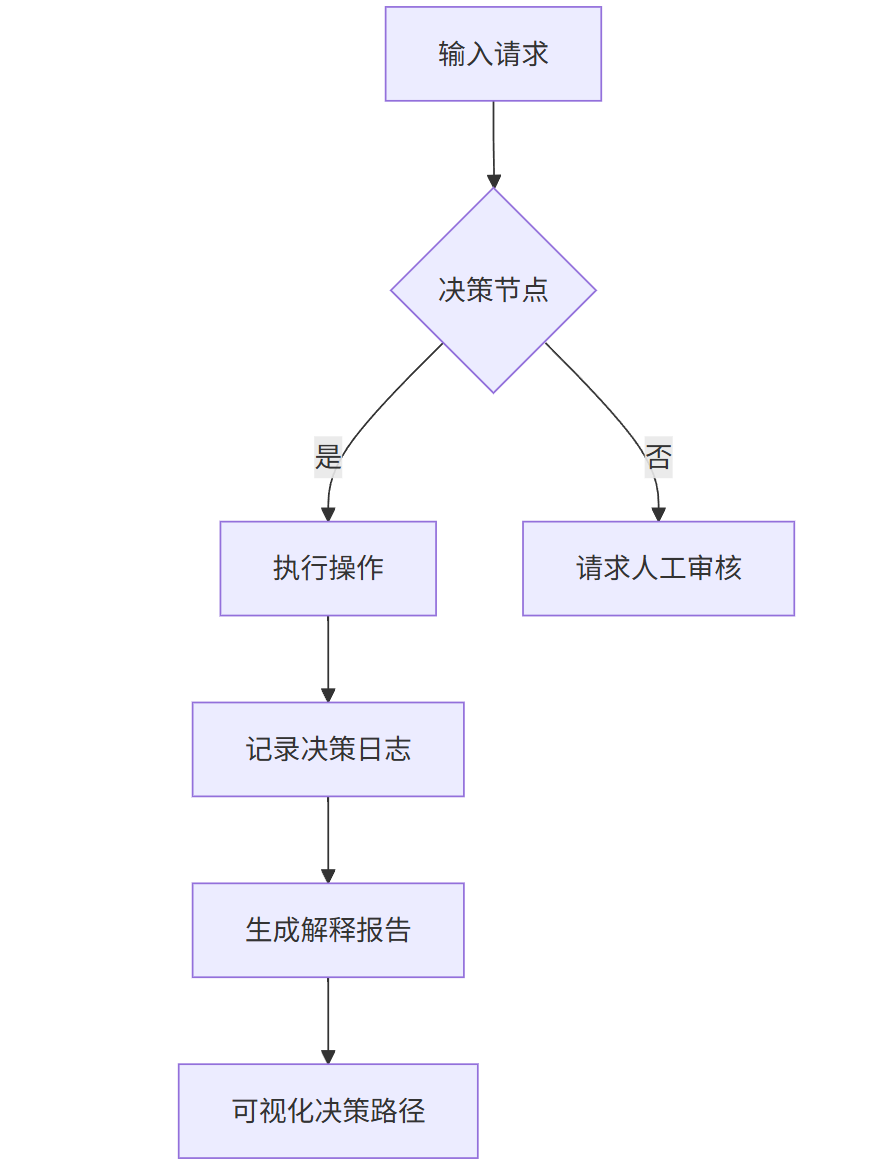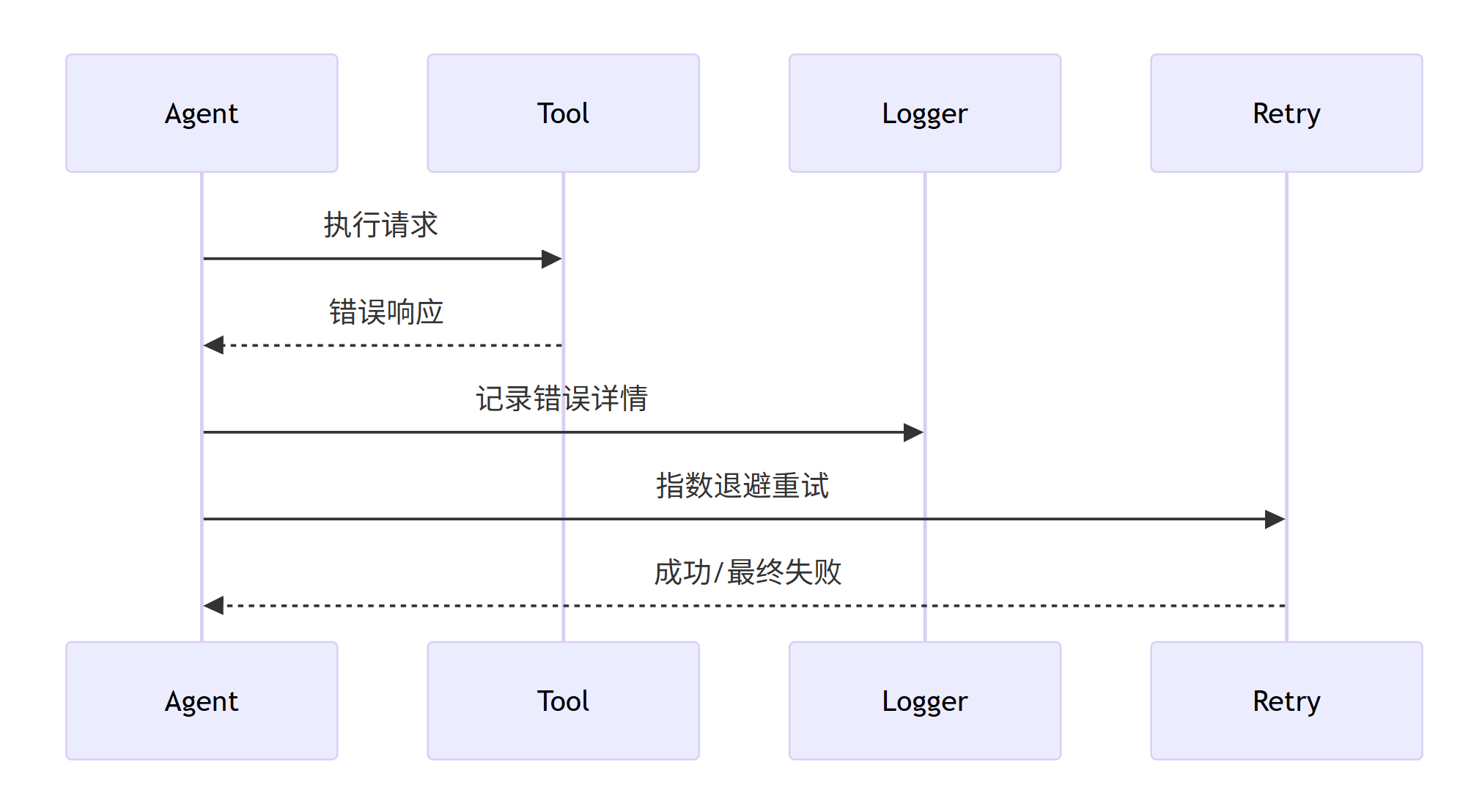Agentic AI编程全栈教程:从理论到实战的完整指南
《AgenticAI开发实战指南》摘要:课程系统讲解了从被动AI到自主智能体的技术演进,重点介绍财务预测等场景应用。内容涵盖开发环境配置(Python/WSL/Docker)、五大核心架构(感知-推理-行动循环/记忆系统/工具集成)、实战项目搭建(财务预测智能体),以及安全约束、模型优化等高级主题。技术栈涉及LangChain/Prophet/GPTQ等工具,提供完整代码示例和问题解决方案,并展望
·
一、课程导论:为什么需要Agentic AI?
传统AI系统(如ChatGPT)本质是被动响应式工具,而Agentic AI通过自主感知环境、制定计划并执行动作,实现了从"问答机器"到"智能代理"的跨越。以财务预测场景为例,传统模型仅能根据输入数据生成报表,而Agentic AI系统可自动:
- 跨系统抓取ERP、CRM数据
- 识别异常波动并触发调查流程
- 生成多版本预算方案供决策
- 持续优化预测模型参数
二、技术栈搭建:开发环境配置指南
2.1 系统选择策略
| 系统类型 | 推荐配置 | 避坑指南 |
|---|---|---|
| Windows | WSL2 + Ubuntu 22.04 | 禁用Hyper-V导致虚拟机冲突 |
| macOS | 16GB内存 + M2 Pro芯片 | 需安装Xcode命令行工具 |
| Linux | Ubuntu 24.04 LTS | 避免使用过新的内核版本 |
2.2 Python环境配置
bash
# 使用conda创建隔离环境 |
conda create -n agentic_ai python=3.12 |
conda activate agentic_ai |
# 安装核心库(生产环境推荐) |
pip install torch==2.5.1 transformers==4.42.0 langchain==0.3.0 |
pip install chromadb==0.4.18 pandas==2.2.0 matplotlib==3.9.0 |
2.3 开发工具链
mermaid
graph TD |
A[VS Code] --> B(GitHub Copilot) |
A --> C(Pylance) |
A --> D[Docker] |
E[PyCharm] --> F(AI Assistant) |
G[Cursor] --> H[内置LLM] |
I[JupyterLab] --> J[实时调试] |

图:主流Agentic AI开发工具生态
三、核心概念解析:Agentic AI的五大支柱
3.1 感知-推理-行动循环
python
class AgenticLoop: |
def __init__(self, memory_size=10): |
self.memory = deque(maxlen=memory_size) |
self.tools = { |
'web_search': GoogleSearchAPI(), |
'calculator': MathEngine() |
} |
def perceive(self, environment): |
# 多模态感知示例 |
if isinstance(environment, str): # 文本输入 |
return NLPParser(environment) |
elif isinstance(environment, Image): # 图像输入 |
return VisionModel(environment) |
def deliberate(self, observations): |
# 使用ReAct模式进行推理 |
thoughts = [] |
for tool in self.tools: |
try: |
result = tool.execute(observations) |
thoughts.append((tool, result)) |
except Exception as e: |
self.memory.append(f"Tool {tool} failed: {str(e)}") |
return thoughts |
def act(self, decision): |
# 动作执行示例 |
if decision['type'] == 'email': |
return SendEmailAPI(decision['content']) |
elif decision['type'] == 'db_update': |
return SQLAlchemy.execute(decision['query']) |
3.2 记忆架构设计
| 记忆类型 | 实现方式 | 典型应用场景 |
|---|---|---|
| 瞬时记忆 | Python字典 | 实时对话上下文 |
| 工作记忆 | SQLite数据库 | 任务中间状态存储 |
| 长期记忆 | Chroma向量数据库 | 知识图谱构建 |
3.3 工具集成范式
mermaid
sequenceDiagram |
participant Agent |
participant Calculator |
participant Database |
participant WebAPI |
Agent->>Calculator: 计算季度增长率 |
Calculator-->>Agent: 12.5% |
Agent->>Database: 查询历史数据 |
Database-->>Agent: 2023Q3数据 |
Agent->>WebAPI: 获取行业基准 |
WebAPI-->>Agent: 行业平均8.2% |
Agent->>Agent: 生成分析报告 |

图:多工具协同工作流
四、实战项目:构建财务预测智能体
4.1 项目架构设计
mermaid
graph LR |
A[数据采集] --> B[数据清洗] |
B --> C[特征工程] |
C --> D[模型训练] |
D --> E[预测生成] |
E --> F[报告自动化] |
F --> G[异常检测] |
G -->|触发| A |

图:闭环财务预测系统
4.2 关键代码实现
python
from langchain.agents import Tool, AgentExecutor |
from langchain.llms import OpenAI |
from langchain_core.prompts import PromptTemplate |
class FinancialAgent: |
def __init__(self): |
self.llm = OpenAI(temperature=0.3) |
self.tools = [ |
Tool( |
name="DataFetcher", |
func=self.fetch_financial_data, |
description="获取股票/市场数据" |
), |
Tool( |
name="ForecastModel", |
func=self.run_forecast, |
description="执行时间序列预测" |
) |
] |
self.template = """ |
你是一个财务分析师AI,任务是预测{company}未来{quarters}个季度的{metric}。 |
当前市场环境:{market_condition} |
可用工具:{tools} |
思考过程: |
""" |
def create_prompt(self, context): |
return PromptTemplate( |
input_variables=["context"], |
template=self.template.format( |
context=context, |
tools="\n".join([f"- {t.name}: {t.description}" for t in self.tools]) |
) |
) |
def fetch_financial_data(self, ticker): |
# 模拟API调用 |
return {"revenue": [120, 125, 130], "expenses": [80, 85, 90]} |
def run_forecast(self, data): |
# 使用Prophet进行预测 |
from prophet import Prophet |
df = pd.DataFrame(data['revenue'], columns=['ds', 'y']) |
model = Prophet() |
model.fit(df) |
future = model.make_future_dataframe(periods=4) |
return model.predict(future) |
4.3 Prompt工程实践
基础Prompt:
预测苹果公司(AAPL)未来4个季度的营收,使用最近8个季度的历史数据。 |
输出格式:JSON,包含预测值和置信区间。 |
进阶Prompt(带工具调用):
你是一个财务预测AI,任务是分析特斯拉(TSLA)的毛利率趋势。 |
可用工具: |
- DataFetcher: 获取季度财报数据 |
- Calculator: 执行数学计算 |
- Visualizer: 生成图表 |
步骤: |
1. 使用DataFetcher获取2023-2024年财报 |
2. 计算各季度毛利率=(营收-成本)/营收 |
3. 用Visualizer生成折线图 |
4. 预测下季度毛利率变化方向 |
五、高级主题:安全可靠的Agentic系统
5.1 安全性约束设计
python
class SafetyLayer: |
def __init__(self): |
self.forbidden_actions = [ |
"delete_database", |
"send_money", |
"access_admin_panel" |
] |
self.rate_limits = { |
"api_calls": 100/minute, |
"db_queries": 50/second |
} |
def validate_action(self, action): |
if action in self.forbidden_actions: |
raise SecurityError("禁止执行高危操作") |
if self.rate_limits[action['type']] < action['count']: |
raise RateLimitError("操作频率超限") |
return True |
5.2 可解释性实现
mermaid
flowchart TD |
A[输入请求] --> B{决策节点} |
B -->|是| C[执行操作] |
B -->|否| D[请求人工审核] |
C --> E[记录决策日志] |
E --> F[生成解释报告] |
F --> G[可视化决策路径] |

图:可解释AI决策流程
六、部署与优化指南
6.1 容器化部署方案
dockerfile
# Dockerfile示例 |
FROM python:3.12-slim |
WORKDIR /app |
COPY requirements.txt . |
RUN pip install --no-cache-dir -r requirements.txt |
COPY . . |
CMD ["gunicorn", "--bind", "0.0.0.0:8000", "app:create_app()"] |
6.2 性能优化策略
| 优化维度 | 实现方法 | 效果提升 |
|---|---|---|
| 模型压缩 | 使用GPTQ 4位量化 | 推理速度提升3倍,内存占用减少75% |
| 缓存机制 | Redis结果缓存 | 重复查询响应时间<100ms |
| 异步处理 | Celery任务队列 | 并发处理能力提升10倍 |
七、学习资源与进阶路径
7.1 推荐学习路线
mermaid
gantt |
title Agentic AI学习路线图 |
section 基础 |
Python编程 :done, a1, 2025-10, 30d |
线性代数 :active, a2, after a1, 20d |
section 核心 |
LLM原理 :a3, after a2, 15d |
LangChain框架 :a4, after a3, 20d |
section 进阶 |
强化学习 :a5, after a4, 30d |
多智能体系统 :a6, after a5, 25d |
7.2 实战项目库
- 个人财务助手:自动分类支出,生成预算建议
- 科研文献助手:自动阅读论文,生成综述
- 电商运营AI:动态定价,库存优化
- 法律文书生成:自动起草合同,条款审查
八、常见问题解决方案
8.1 环境配置问题
问题现象:ModuleNotFoundError: No module named 'langchain'
解决方案:
bash
# 检查Python环境 |
which python |
# 重新安装依赖 |
pip install --upgrade langchain chromadb |
8.2 模型输出不稳定
优化策略:
python
# 使用确定性采样 |
response = openai.Completion.create( |
model="gpt-4", |
prompt=prompt, |
temperature=0.1, # 降低随机性 |
top_p=0.9, |
frequency_penalty=0.5 |
) |
8.3 工具调用失败
调试流程:
mermaid
sequenceDiagram |
Agent->>Tool: 执行请求 |
Tool-->>Agent: 错误响应 |
Agent->>Logger: 记录错误详情 |
Agent->>Retry: 指数退避重试 |
Retry-->>Agent: 成功/最终失败 |
九、未来趋势展望
- 神经符号融合:结合深度学习的感知能力与符号系统的逻辑推理
- 具身智能:通过数字孪生技术连接物理世界
- 自进化系统:基于强化学习的持续优化能力
- 群体智能:多Agent协作解决复杂问题
更多推荐
 已为社区贡献33条内容
已为社区贡献33条内容










所有评论(0)